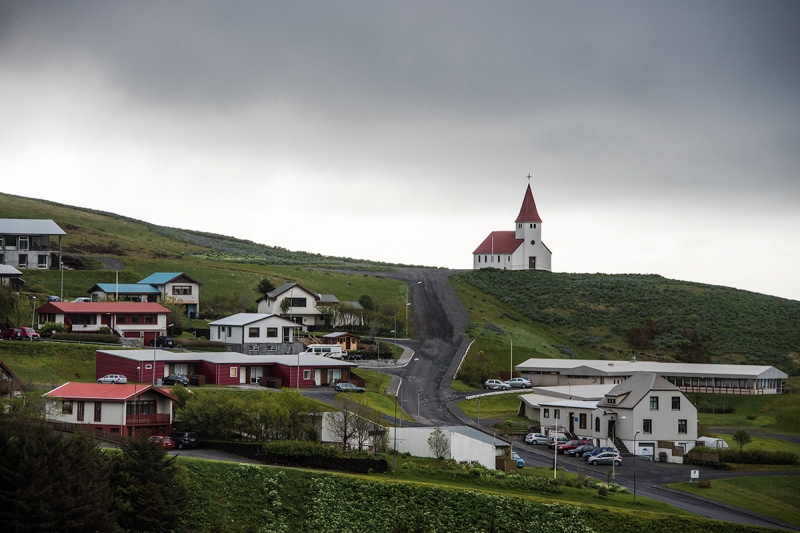Vik (Vík) Town
Vik (Vík) Town
Vik is a small coastal town with a quaint hilltop church and a marvelous black beach, backed by dunes.
In spite of its coastal location, the town has no fishing industry and no port. It has largely developed as a service center for the surrounding region.
WARNING! Freak waves, rip currents and strong tides combine to make Vík's beach a hazardous spot, at any time of year. Bathing and paddling are prohibited.
Please ensure you keep well away from the water’s edge; the local recommendation is at least 20m but we suggest you err on the side of caution.
Part of the town is built on the hillside as residents once feared their homes could be damaged by flooding from Katla eruptions.
Behind Vik, Katla lies under the Myrdalsjokull glacier and its eruptions are accompanied by severe meltwater floods. A dike now protects the town from possible flooding.
During the last Katla eruption in 1918, debris brought down in the floods extended the coast at Vik by 500m.
Since then coastal erosion has eaten into the shoreline and a groin has been constructed on the beach to protect the houses built on the plain.
Most visitors stop at the service station, wool factory and souvenir shop by the main road. From here you can walk down to the beach past an Arctic tern colony.
If you prefer to drive down, by the bridge on the main road, turn towards the sea and you will pass an enclave of restored houses and a museum and cafe.
The road turns to a track and winds down to the dunes.
From here you can view Reynisdrangar, the sea stacks that are Vik’s landmark. Puffins nest on the cliffs here.
There is a poignant sculpture above the beach by an Icelandic artist in memory of the British trawlers that stranded on Iceland’s shores – a duplicate sculpture was donated by the artist to the city of Hull.
A dirt road snakes up the mountain Reynisfjall, west of the town, and the summit offers great views in clear weather.
Vik has a bank and well-stocked supermarket.


